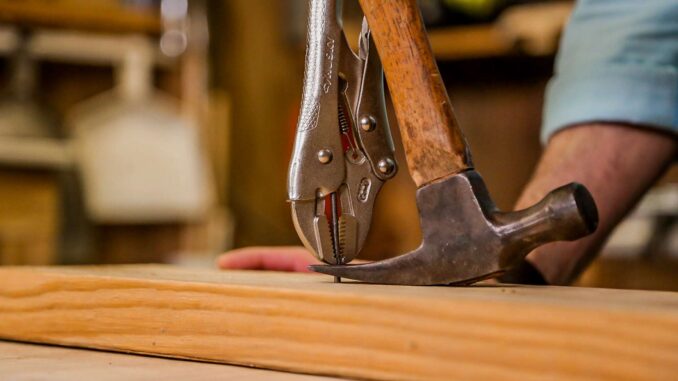
Nails are an essential part of woodworking, helping to securely join pieces of wood together. Over time, though, you may find yourself needing to remove nails from wood. Whether you’re tearing down old furniture, doing a renovation, or repurposing wood, nail removal is a critical skill to have. However, nails can be difficult to remove, especially when they are deeply embedded or rusted.
In this comprehensive guide, we’ll teach you how to remove nails from wood with ease and without damaging your materials. Whether you are a homeowner, carpenter, or DIY enthusiast, you will find useful techniques to ensure clean and efficient nail extraction. The goal is to preserve the integrity of your wood while successfully removing nails that no longer serve their purpose.
Why Nails Get Stuck in Wood
Before diving into the process of removing nails, it’s important to understand why nails sometimes become difficult to remove. Understanding these reasons will help you choose the best approach for your task.
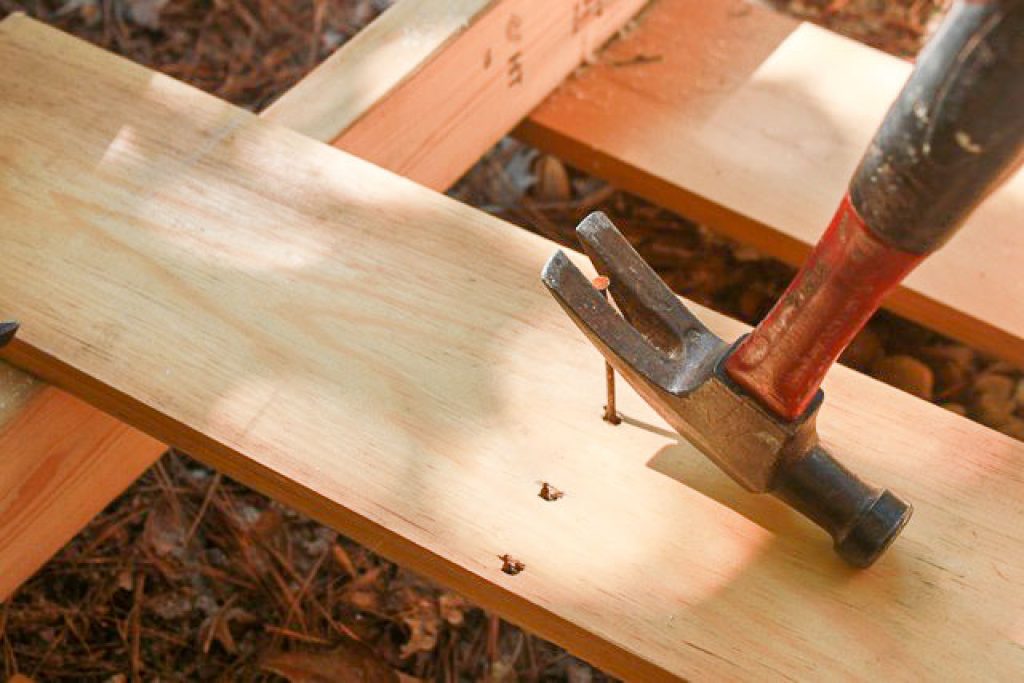
Types of Nails Used in Woodworking and Construction
The type of nail used in construction or woodworking can play a huge role in how easy or difficult it is to remove later on. Let’s break down the types:
- Finish Nails: These nails are slender, with small heads, making them perfect for trim work. Their size makes them challenging to grip, and pulling them out requires precision.
- Common Nails: These are the standard nails used in framing and structural work. They are thicker, stronger, and more durable. But if they are driven too deeply, they become much harder to extract.
- Brad Nails: These are even smaller than finish nails and are often used for delicate trim or molding work. Like finish nails, they are also difficult to remove due to their tiny heads.
- Decking Nails: Used in outdoor projects like decks, these nails are often treated with a rust-resistant coating. However, their durability can sometimes make them challenging to remove.
Factors that Contribute to Nails Being Difficult to Remove
Several factors can contribute to how easily a nail can be extracted. Understanding these factors is essential to know how to remove nails from wood effectively:
- Rust: Over time, nails can rust, which can make them difficult to grip and pull out. The rust causes the nail to become rigid and stuck in place, requiring special attention.
- Deeply Driven Nails: Nails that are driven too deep into the wood, or are bent, become harder to remove. The deeper the nail is driven, the more force you’ll need to extract it without causing damage.
- Nail Type: The head of the nail plays a major role in the ease of removal. Nails with smaller heads, such as finish nails or brads, are much harder to grip and pull out.
- Type of Wood: Some types of wood, like hardwoods, can make nails more difficult to extract. Softwoods, while easier to work with, still require the right tools and technique.
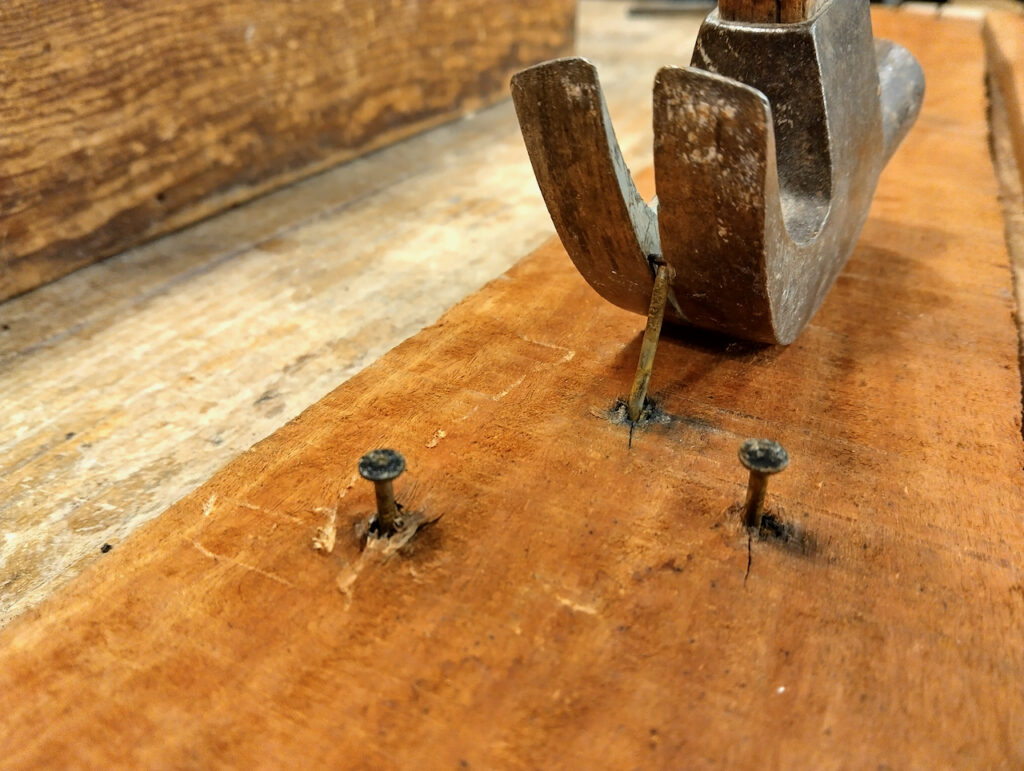
Tools You’ll Need to Remove Nails from Wood
Knowing the proper tools to use is key to removing nails effectively and safely. Inadequate tools can result in damaged wood or broken nails. Let’s look at the essential tools for how to remove nails from wood.
Basic Tools
These basic tools are commonly used for most nail-removal jobs, whether you’re dealing with exposed nails or partially driven nails.
- Claw Hammer: A staple in any toolbox, the claw hammer is perfect for pulling nails. The curved end of the hammer is ideal for gripping the nail’s head and pulling it out.
- Nail Puller: This is a specialized tool designed specifically for removing nails. It is ideal for nails that are difficult to grip with a hammer or pliers.
- Pliers: Pliers can offer excellent leverage when pulling out nails that are partially exposed. They are particularly useful for smaller nails.
- Pry Bar: A pry bar, also known as a crowbar, is ideal for nails that are deeply embedded in the wood. The length of the bar gives you added leverage to remove stubborn nails.
- Flathead Screwdriver: Sometimes, a simple flathead screwdriver can help you gently pry out a nail, especially when it’s barely sticking out.
Advanced Tools (For Stubborn Nails)
If you’re dealing with especially tough nails, advanced tools may be necessary. Here are some specialized tools for more challenging situations:
- Crowbar: The crowbar provides extra leverage, making it easier to remove nails deeply embedded in tough wood. It’s a good tool for heavy-duty projects.
- Pneumatic Nail Puller: For extreme cases where nails are nearly impossible to remove with hand tools, a pneumatic nail puller is a good option. This air-powered tool allows for effortless nail removal.
- Screw Extractor: A screw extractor is typically used for removing broken screws, but it can also be used for deeply embedded nails. It creates a strong grip on the nail and allows it to be pulled out without damaging the surrounding wood.
Protective Gear
When working with tools and nails, it’s important to keep safety in mind. Here are the protective items you’ll need:
- Safety Gloves: These gloves protect your hands from sharp nails and the edges of tools. They also provide a better grip when handling nails.
- Safety Goggles: Always wear safety goggles to protect your eyes from flying debris or nails.
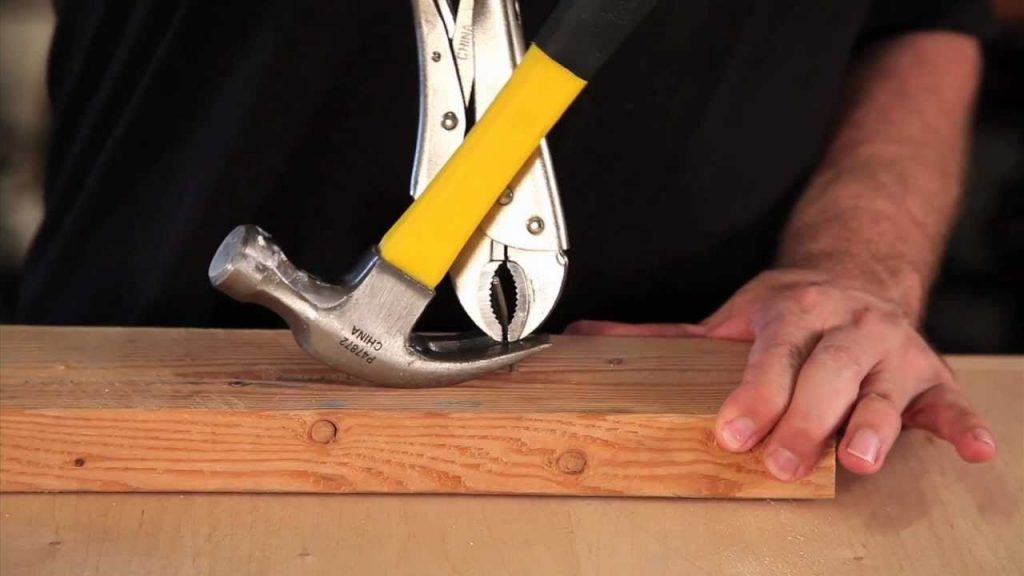
Step-by-Step Guide to Removing Nails from Wood
Now that we’ve covered the tools, let’s dive into the actual process of how to remove nails from wood. This step-by-step guide will help you approach the task methodically.
Step 1: Assess the Nail
Before removing the nail, take a few moments to assess its condition and the surrounding wood.
- Determine the Nail Type and Size: Identify whether the nail is a finish nail, brad, or common nail. The nail type will determine the tool you need.
- Inspect for Rust: Rusted nails are more difficult to remove. If the nail is rusted, you may need to take extra steps, like using penetrating oil.
Step 2: Choose the Right Tool
Choosing the right tool based on the nail’s condition is crucial. For example:
- For Exposed Nails: Pliers or a claw hammer are often sufficient for nails that have their heads exposed.
- For Deeply Embedded Nails: Use a pry bar or crowbar to provide extra leverage and pull the nail out.
- For Rusted Nails: A pneumatic nail puller or a nail puller tool can be helpful when dealing with tough, rusted nails.
Step 3: Preparing the Wood Surface
Preparation is key when removing nails. Protecting the surrounding wood is critical to prevent damage.
- Clear the Area Around the Nail: Remove any debris, dust, or objects that may obstruct your tools.
- Protect the Wood: Place a piece of scrap wood or a cloth over the surrounding area. This will cushion the impact when the nail is pulled out and help prevent splintering or gouging.
Step 4: Using the Claw Hammer or Pliers
Using a claw hammer or pliers is one of the most common methods for removing nails. Here’s how to use these tools effectively:
- Grip the Nail Head: Place the claw of the hammer or the jaws of the pliers around the nail’s head.
- Slowly Leverage the Nail: Apply gentle pressure, pulling the nail straight out. Be cautious not to twist the nail, as this can damage the wood.
Step 5: Using a Pry Bar or Nail Puller for Stubborn Nails
When nails are stubborn, a pry bar or nail puller is a better tool to use. Follow these steps:
- Insert the Tool Under the Nail: Slide the pry bar or nail puller beneath the nail’s head. You may need to gently tap the tool with a hammer to get it under the nail.
- Leverage the Nail: Once the tool is under the nail, slowly apply pressure to lift the nail out. Take care to avoid sudden jerks that can splinter the wood.
Step 6: Removing Nails from Tight Spaces
Sometimes nails are located in hard-to-reach areas. Here’s how to deal with that situation:
- Use Smaller Tools: Smaller pry bars, screwdrivers, or even needle-nose pliers can help you reach nails in tight corners.
- Be Patient: It may take extra time to work in tight spaces, so don’t rush the process.
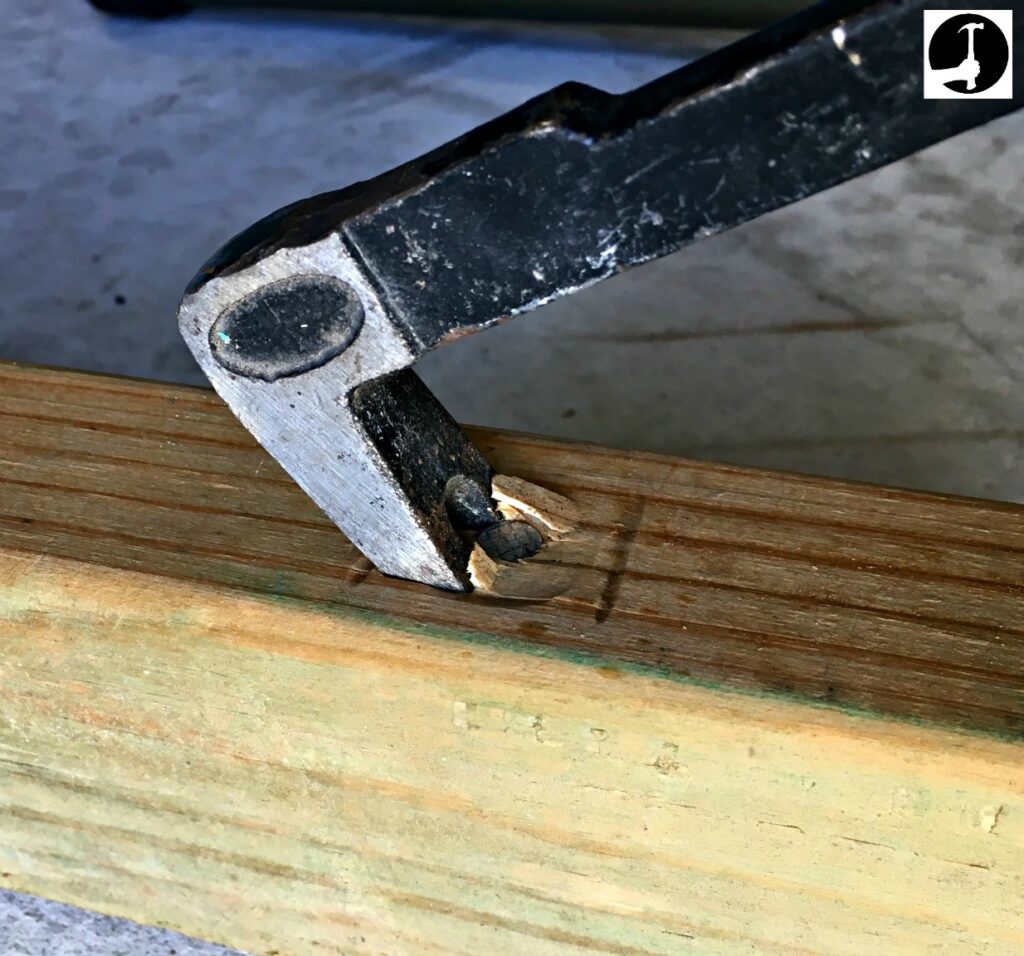
Tips for Removing Rusted Nails
Rusted nails can be more difficult to remove. However, with the right techniques, you can still extract them successfully.
Loosening Rusted Nails
- Use Penetrating Oil: Apply penetrating oil like WD-40 to the rusted nail. Allow the oil to sit for several minutes to loosen the rust.
- Apply Heat: In extreme cases, heating the nail with a blowtorch can help loosen the rust. Be cautious not to damage the wood with excessive heat.
Patience Is Key
When dealing with rusted nails, avoid rushing the process. Forcing a rusted nail out too quickly can break the nail or damage the wood. Take your time and work carefully.
What to Do If You Can’t Remove the Nail
Sometimes a nail simply won’t budge. In these cases, there are a few options:
- Cut the Nail Flush with the Wood: If you can’t remove the nail, you can cut it flush with the surface of the wood. Afterward, you can cover it with wood filler or another material.
- Use a Nail Extractor: For deeply embedded nails, a nail extractor can grip the nail and pull it out.
- Call a Professional: If all else fails, a professional carpenter may be able to remove the nail without causing damage.
Common Mistakes to Avoid While Removing Nails
While removing nails may seem straightforward, it’s easy to make mistakes that can damage your wood. Avoid the following:
- Over-Forcing the Nail: Don’t apply excessive force, as this can split the wood or break the nail.
- Using the Wrong Tool: Ensure you’re using the appropriate tool for the type of nail and wood.
- Not Protecting the Wood: Always use scrap wood or cloth to protect the surrounding wood when using your tools.
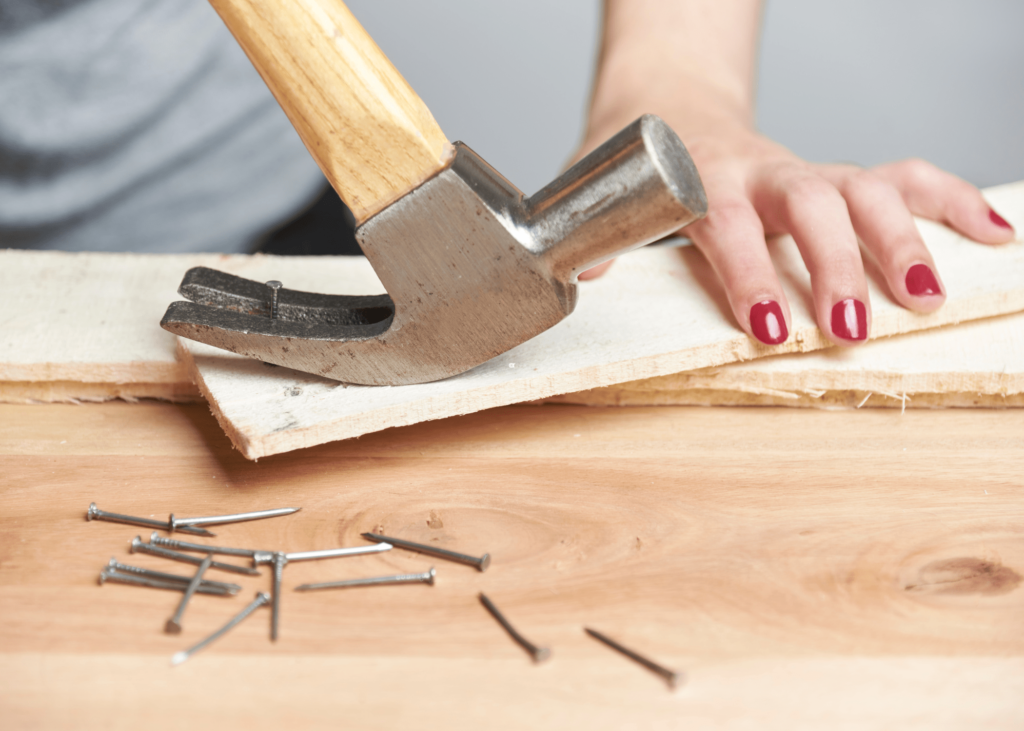
Preventing Future Nail Issues
Now that you know how to remove nails from wood, let’s talk about preventing nail-related problems in the future.
How to Drive Nails Properly
To make nail removal easier in the future, here are a few tips for driving nails:
- Avoid Driving Nails Too Deeply: Leave some of the nail head exposed to make it easier to remove.
- Use Larger Nails: Nails with larger heads are easier to grip and remove later.
Alternatives to Nails
If you’re planning a project that requires frequent disassembly, consider using screws or wood adhesives instead of nails. These materials often allow for easier removal.
Wrapping Up
Knowing how to remove nails from wood is an essential skill for anyone working with wood. By using the right tools and techniques, you can safely remove nails without causing damage to your materials. Whether you’re dealing with rusted nails, deeply embedded nails, or need to reuse the wood, following these steps will help you accomplish the task efficiently and effectively.
Remember, patience and preparation are key. With time and practice, you’ll be able to remove nails quickly and without hassle.
FAQ Section
What’s the easiest way to remove nails from wood?
The easiest method is using a claw hammer or pliers for nails that are exposed.
How do I remove deeply embedded nails without damaging the wood?
A pry bar or crowbar is best for deeply embedded nails, as it provides more leverage.
Can I use a drill to remove nails from wood?
While a drill isn’t ideal for removing nails, it can help remove broken nails or cut flush.
How can I remove nails from old wooden furniture?
Use a small flathead screwdriver or pliers to gently pry out the nails.
What’s the best way to remove nails from hardwood versus softwood?
For hardwood, use tools with extra leverage, like crowbars. Softwood is easier to work with and can often be done with a claw hammer.